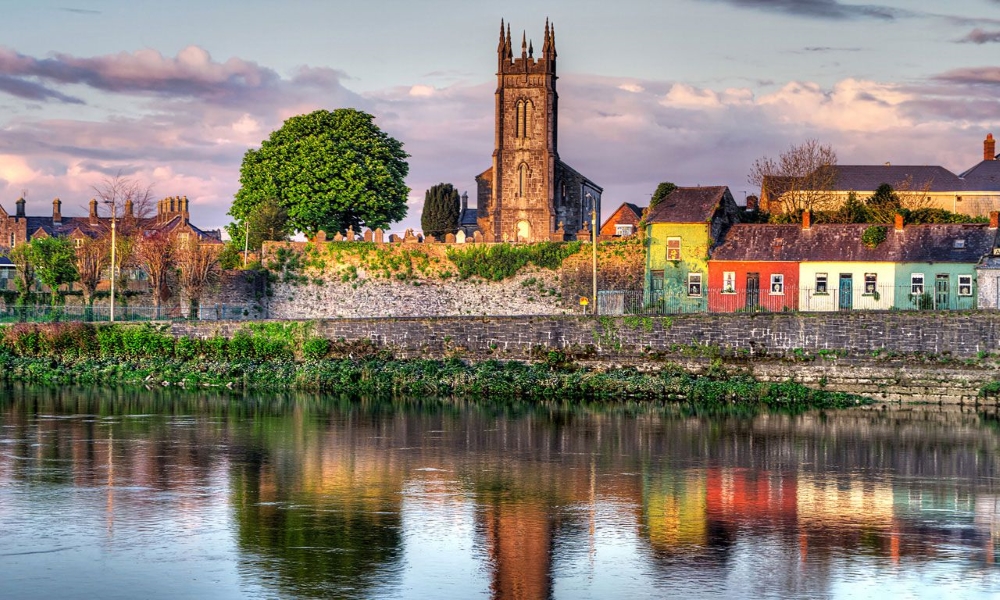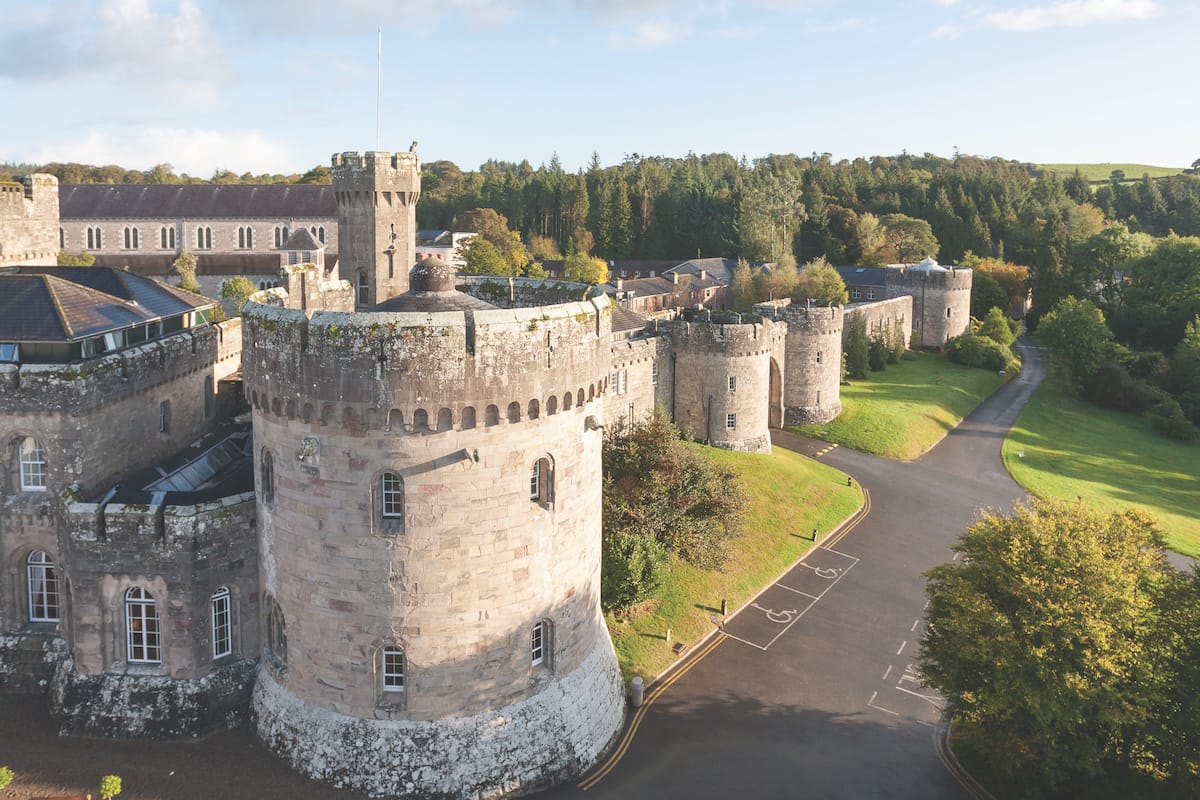Overview
A city on a grid plan, Limerick is Ireland’s third urban centre and the third strongest economy after Dublin and Cork. This bustling port on the Shannon Estuary fuelled a wave of construction in Georgian times, when the elegant Newtown Pery quarter was born. Earlier, in 1691, Limerick was where the Williamite War reached its conclusion, ushering in tough times for Ireland’s Catholics.
The stone that the Treaty of Limerick was signed on is just across the river from the mighty King John Castle, dating to the 13th century and recently upgraded as a world-class visitor attraction. Limerick was also where the author Frank McCourt grew up in poverty, while the Hunt Museum has a thrilling jumble of curiosities, from a Gauguin painting to Medieval religious art.
Language Schools and Camps in this Destination
Limerick, Ireland
Things to Do and See During a Vacation Study
King John’s Castle
At the start of this decade Limerick’s fabled castle on the River Shannon was given a multimillion-Euro update. A new visitor centre was added, along with interactive exhibitions, touch-screens and CGI displays. These tell the tale of one of Europe’s most complete Norman castles, ordered by King John of England in 1210. Kids can open drawers to learn more about the castle and interact with projections, while the visitor centre goes into depth on the complicated archaeology of the site. There are excavated houses pre-dating Norman times, siege mines and a battlement walk beside the Shannon. In the summer holidays the courtyard has characters like a stonemason, blacksmith or soldier recalling old times.
St Mary’s Cathedral
Founded in 1168, St Mary’s Cathedral is the oldest monument in the city that continues to be a part of daily life. The church is believed to have been built on the site of a Viking “Thing”, or meeting place, and incorporated elements from a Viking palace around the Great West Door. The 37-metre tower dates to the 1200s and has eight bells cast at the Whitechapel Foundry in London. In the Chapel of the Virgin Mary you’ll find the altar, which stands four metres high and was carved from a single block of limestone. This was taken from the church around 1651, when Cromwell turned this space into stables, and wouldn’t be replaced until the 1960s. The Glentworth Chapel meanwhile has cannonballs fired during the Siege of Limerick in 1691.
Hunt Museum
The Georgian Custom House in Newtown Pery contains a riveting collection of historical artefacts and art donated by the antique dealer and antiquarian John Hunt. Like the best museums the Hunt is a big mishmash, with more than 2,500 objects, as diverse as an Ancient Egyptian amulet, paintings by Renoir, Gauguin and Picasso, a bronze horse attributed to Leonardo da Vinci (but recently disproven) and tons of religious artefacts. One of the outstanding pieces is the Antrim Cross, made of bronze and enamel and produced in the 800s. Also unmissable are the dresses by haute couture designer Sybil Connolly, and two paintings by Jack Butler Yeats.
Frank McCourt Museum
The author Frank McCourt won the Pulitzer Prize in 1996 for Angela’s Ashes, a humorous but also grim memoir of his childhood in Limerick in the 1930s and 40s. Housed in the Leamy School, which McCourt attended, the Frank McCourt Museum recalls the hardship of daily life in the city in that period. You can visit a classroom from the 1930s and see inside the McCourt home, based on historical research and McCourt’s own recollections. In display cases are photos and other pieces of memorabilia donated by former pupils, while murals show Limerick’s notorious “Lanes”, McCourt cycling to work and his mother, Angela, who raised him single-handedly.
Milk Market
One of Ireland’s finest farmers’ markets, the Milk Market is a dream for people who care about where their food comes from. The complex was refurbished in the 90s, and sits under a large canopy or “big top” which has become a stage for live music. The big market day is Saturday, when you can buy produce and delicacies from the people who rear, catch, grow or make them. This might be artisan cheese, prime cuts of meat, fresh fish, organic fruit and vegetables, chutneys, bread out of the oven or homemade preserves. There are more than 50 stalls and 21 permanent shops, most of which also trade on Fridays and Sundays.
Newtown Pery
The name for one of the three distinct towns in central Limerick, Newtown Pery is the retail district just to the north of the city centre. The quarter was laid out when Limerick was a booming port between the 1750s and 1830s. Newtown Pery is rare in Ireland as it’s all plotted on a grid plan, and also has some of the country’s most striking Georgian architecture outside of Dublin.
People’s Park
In Newtown Pery, the People’s Park was imagined in the first decades of the 19th century as a grand Georgian place in the vein of Mountjoy Square in Dublin. But the development was curtailed by the Great Famine, and only one terrace of flat-fronted mansions was completed. The park was opened in 1877 and is the main parcel of greenery in the centre of the city. Apart from the bandstand, two gazebos, and a dainty drinking fountain (one of only two left in Ireland), what makes the park special is its king-sized trees planted in the 19th century. Between the rambling paths are elms, hawthorns, beeches, ashes, birches, planes, poplars and the cherry and crabapple trees that bloom in spring.
St John’s Cathedral
Limerick’s Catholic cathedral was conceived by the English architect Philip Charles Hardwick and completed in 1861. The 94-metre tower, a constant part of the city’s skyline, dates to 1882 and was built with limestone quarried not far away in Rosbrien. More than 130 years later it remains the tallest structure in Limerick. Inside, seek out the “cathedra”, or bishop’s chair, which along with the choir stalls were carved in Munich in 1894. The altar meanwhile was fashioned from Limerick marble and has alabaster sculptures representing the Sacrifice of Isaac.
Limerick City Gallery of Art
In a solemn Romanesque Revival hall from 1906, the Limerick City Gallery of Art has Irish art every medium, from the 18th to the 21st centuries. The permanent exhibition draws on a collection with works by eminent names Grace Henry, Jack Butler Yeats, Paul Henry and Seán Keating. The gallery also holds the National Collection of Contemporary Drawing and the Michael O’Connor International Poster Collection.
The Treaty Stone
The Williamite War came to an end in this city in 1691 with the second Siege of Limerick. Catholic Irish and French Jacobite forces were eventually defeated by the Protestant Williamites, from Ulster, England, Scotland, the Netherlands and Denmark. The Treaty of Limerick was signed on 3 October 1691, and was a turning point in Irish history, leading to the “Flight of the Wild Geese”, when 24,000 Catholics left the country for France. The Treaty of Limerick was soon broken, and Ireland’s Catholic population would later suffer under the oppressive Penal Laws for more than a century. This stone on the Clare end of the Thomond Bridge has a pedestal with a hunk of stone believed to have been used to write the treaty.
Lough Gur
Irish prehistory is always gripping, so you should be sure not to miss this archaeological site 20 kilometres south of Limerick. In hilly countryside, Lough Gur is a horseshoe lake with all sorts of megalithic remains on its banks. This pocket of land has been occupied by humans for more than 5,000 years, and has ring forts on the higher ground, traces of Stone Age houses, the Grange stone circle and three crannogs (Neolithic artificial islands).
How to Arrive at your Language Course
By Plane
Arriving by Plane to Shannon Airport
Limerick city is serviced by Shannon Airport, which has regular flights from a number of European and North American destinations.
The national bus company, Bus Eireann, runs a regular bus service between the Airport and Limerick city centre. Details are available here.
Arriving by Plane to Dublin Airport
There are also a number of bus companies which travel directly to Limerick from Dublin airport such as:
Otherwise, it is possible to catch a direct train from Dublin city center.













